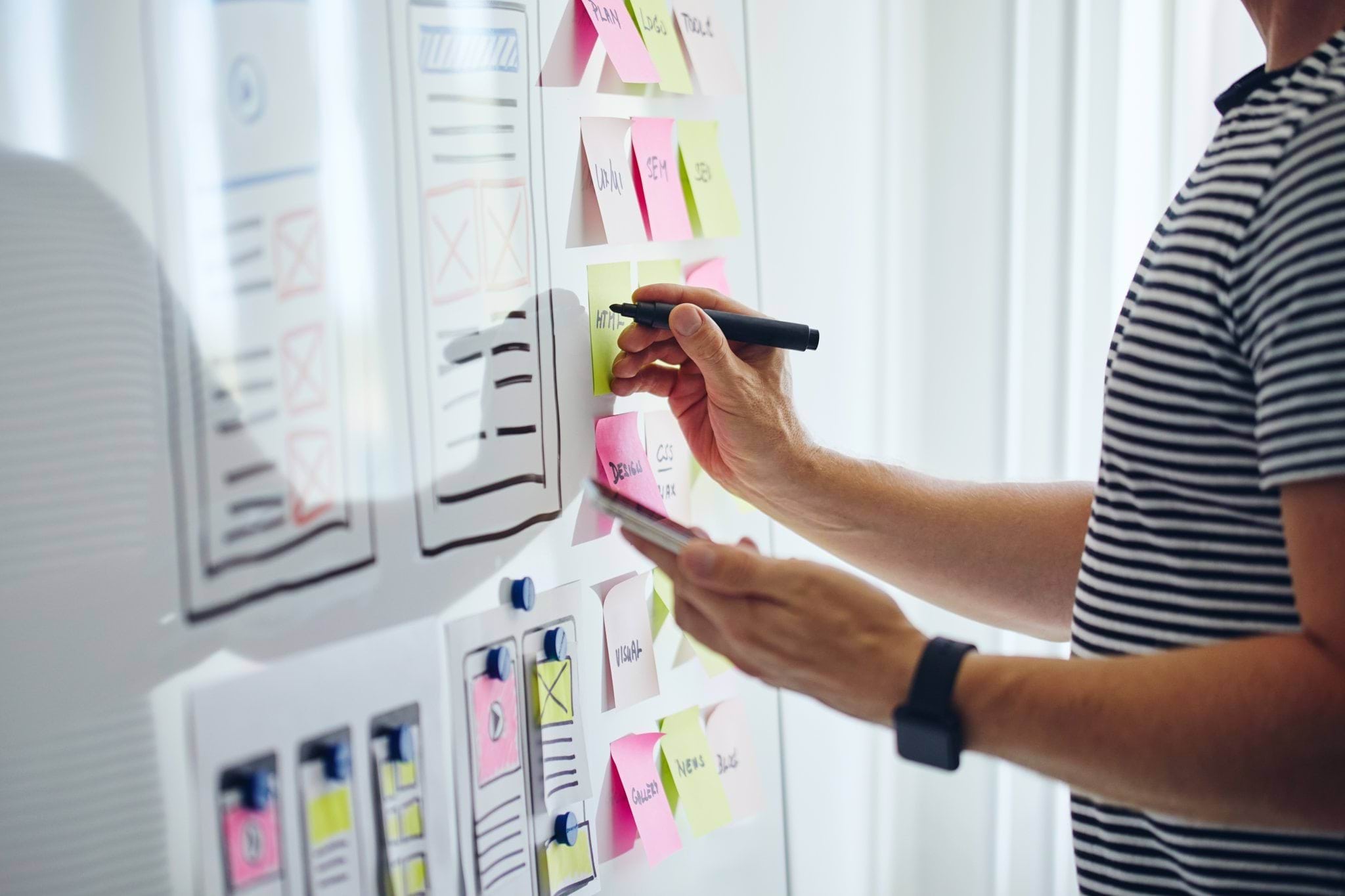Design tools and resources
If you’re new to human-centred design and its practices, we have developed a series of projects plans, methods and outputs to help you get started. We recommend that you collaborate with seasoned designers to execute your projects rather than undertaking the design activities by yourself.
In this section you will find a series of outputs explaining what they are, what you will get, when to use, what they are not, tips and key terminology.
Outputs
A tool used to visualise the user experience. It shows where and when a person or group interacts with existing services and products and what the experience is like for them.
The result of ideation – early outputs that represent ideas before prototyping begins.
Statements capturing the intent of a new design without specifying the solution.
A reference tool that researchers use during qualitative research containing details about how each research session should be conducted.
A journey map that describes a vision for the user experience you want to create.
A one-page visual summary of how a program of work will move towards a desired future state, launch or release date.
The output from user research, containing insights, stories, opportunities or recommendations backed up by evidence.
A breakdown of a customer base or population into groups that share important common attributes or needs.
Opportunities and recommendations →
An output of research that highlights important things or ‘so whats’ that require attention and action.
A fictional archetype, based on user research, that represents a group of people who use a site, service or product in a similar way or who have similar user needs.
Explanations of what work needs to happen and why it is important work to do – the motivators of design activity.
A team’s best guess at how a project will unfold over time.
A simulation, demo or mock-up of a site, product or service that you can use to test your ideas before beginning to build.
A journey map with key operational processes mapped underneath, used to capture and assess how a service organisation completes various tasks across a user journey.
A plan for how, when and why a project team will involve and communicate with project stakeholders.
A visualisation of the interactions, relationships, variables, actors, processes and exchanges in a service or policy space.
User experience vision and principles →
A way of describing what your organisation is working towards – the future-state experience you’re attempting to create for users.
A simulation or a hypothetical narrative that describes how a user might interact with a product or service and accomplish a particular task.
A way of articulating user needs, written in first person, so that design can begin (from the Agile software development methodology).
A statement describing what it is that your organisation, product or service offers to your users.
An interactive prototype that demonstrates various interface elements (buttons, forms, menus etc.) of a web page or application.
Updated
